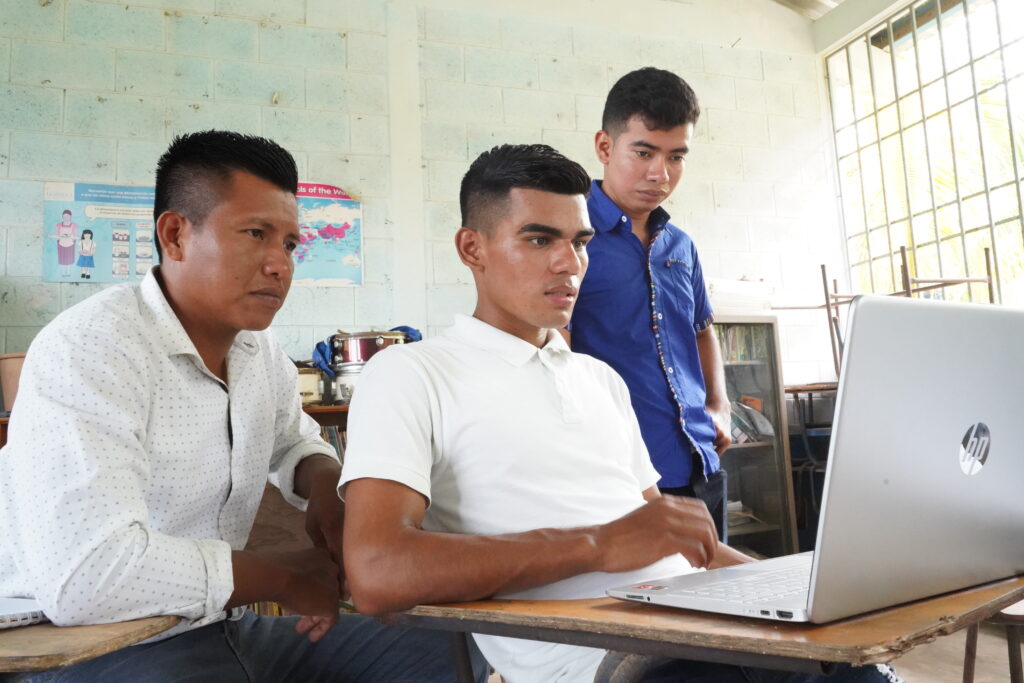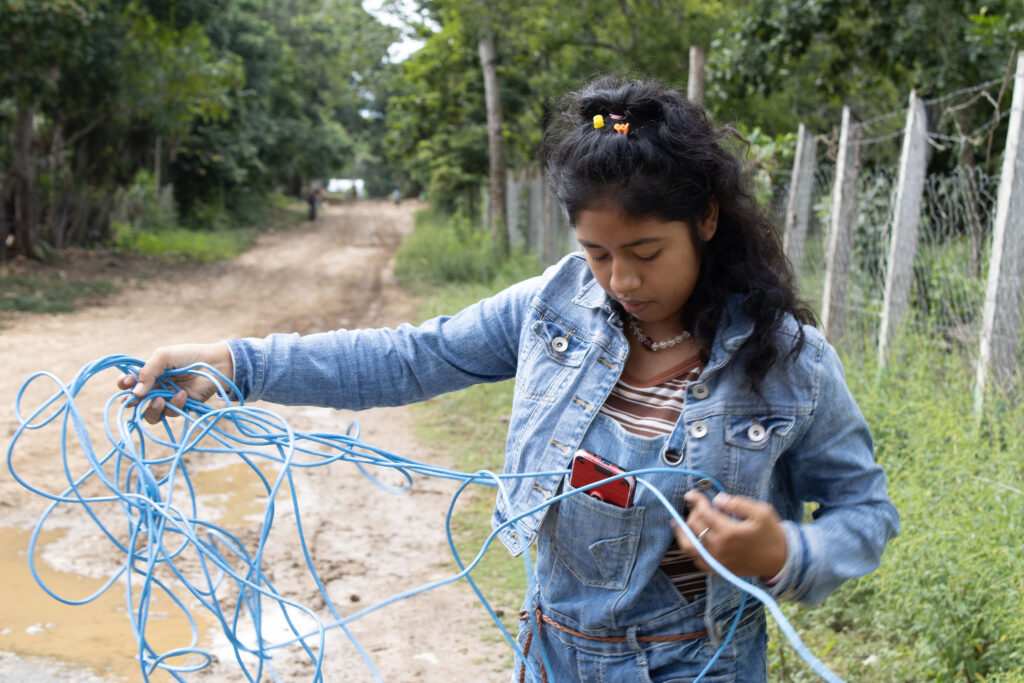November 02, 2023
This blog was originally written in English and automatically translated using artificial intelligence.
After nearly two years of work with the youth living within the Maya Biosphere Reserve in Petén, Guatemala, we recently concluded the workshop “Building Capacities for the Installation of Community Intranet Networks” for young people from the Association of Forest Communities of Petén (ACOFOP). This workshop was facilitated by TINTA, ACOFOP, the Mesoamerican School of Leadership, and the Community Intranets Research Group at the Universidad Autónoma Metropolitana – Iztapalapa Campus, Mexico.
With the delivery of equipment, the Integral Forest Association Cruce a la Colorada (AFICC) joins the cooperatives La Lucha and Unión Maya Itzá (members of ACOFOP), becoming the third group of youth equipped for intranet and a group of community youth trained to install it and put it to use for their communities.
Context: What is community connectivity, what role does an intranet play, and why is it important for ensuring the rights of young members of forest communities?
As colonization, deforestation, and acculturation increasingly penetrate the community and Indigenous ways of life of the peoples inhabiting tropical forests, traditional knowledge and worldviews become increasingly difficult to transmit from generation to generation. We undoubtedly face an ambivalent role that new communication technologies, internet access, and the use of digital platforms and social networks play in this process of “modernization” of so-called “traditional” or Indigenous societies.
Nevertheless, engaging in this global digital society is essential to participate in the global discussions and processes that affect their lives, territories, and futures. Communication technologies not only facilitate access to information, education, external communication, or leisure as individual rights but are also fundamental tools for political advocacy in the defense of their territories and cultures. Thus, technology is also vital for including their voices and solutions in climate dialogue.

Jóvenes líderes aplican conocimientos sobre programación durante un intercambio de experiencias realizado con organizaciones latinoamericanas en Petén, Guatemala (2022) Crédito: TINTA
Community Connectivity: Approach and General Results
Since 2021, TINTA has worked alongside youth leaders, providing opportunities for connection and learning from other communities through technological means, sharing knowledge, including traditional ones, on topics such as community forest management (although the topics often extend much further). Together with ACOFOP and the Mesoamerican School of Leadership, TINTA has designed a series of training sessions, international exchanges, workshops, and debates for the youth of the Maya Biosphere Reserve, many of whom lack access to mobile technology or the internet due to the environmental laws of the reserve. As a result:

Instalación de equipo de Intranet en la comunidad de Cruce a la Colorada, Petén, Guatemala (2023) Crédito: Red Compa / ACOFOP
More about ACOFOP
The Association of Forest Communities of Petén (ACOFOP) brings together communities from the buffer zone of the Maya Biosphere Reserve to manage concessions that collectively represent the largest area of forest certified under community management in the world. The organization has ensured communities’ access to the forest by securing legal forest concessions for the sustainable extraction of timber and non-timber forest products at the local level. Through the pioneering use of certification and monitoring systems for flora and fauna, this organization has helped conserve the forest’s biodiversity and improve the livelihoods of over 14,000 community members. The association currently comprises 24 community organizations, each represented in an equitable and democratic governance structure.
More about the Mesoamerican School of Leadership
The Mesoamerican School of Leadership is a “school without walls,” itinerant, with a pedagogical philosophy focused on critical-transformative approaches. The School is a novel model due to its pedagogical philosophy and transformative educational approach tailored to communities. Its main objective is to strengthen leadership and capacity-building in community and Indigenous organizations of the Mesoamerican Alliance of Peoples and Forests (AMPB). Its challenge is to train young women and men as leaders with human values, capable of igniting and transcending that higher ideal with which the organizations they belong to were formed. It works for the individual, not for mechanical learning about a topic, but for self-recognition, reconstruction, and the ability to base behavior on an effective community approach.
More about the Community Intranet Research Group at Universidad Autónoma Metropolitana – Iztapalapa Unit
The Community Intranet Research Group is a research and technological development team formed by students from the Universidad Autónoma Metropolitana, Iztapalapa Unit (UAM-I). It focuses on the development and design of technology to solve telecommunications problems for marginalized areas and communities without internet access. UAM-I’s philosophy is to produce humanistic and scientific knowledge in response to social issues; therefore, within teaching and research, its students engage in strong community work.
More about TINTA
The aforementioned learning methodology is based on the accumulated experience of TINTA in conducting learning exchanges that establish important strategic connections, which in turn strengthen and enhance leadership and territorial organizations. In the process of exchanging experiences and knowledge from different visions, cultures, and languages, we highlight and reinforce the capacity to adapt the lessons learned by other organizations and communities to different territories and contexts.
Moreover, by providing community innovators with tools, knowledge, and networks, we believe that young leaders will create opportunities and transform their communities. Additionally, we encourage youth from the forests to strengthen forest and popular organizations, creating documentation and preserving traditional knowledge and collective memory.